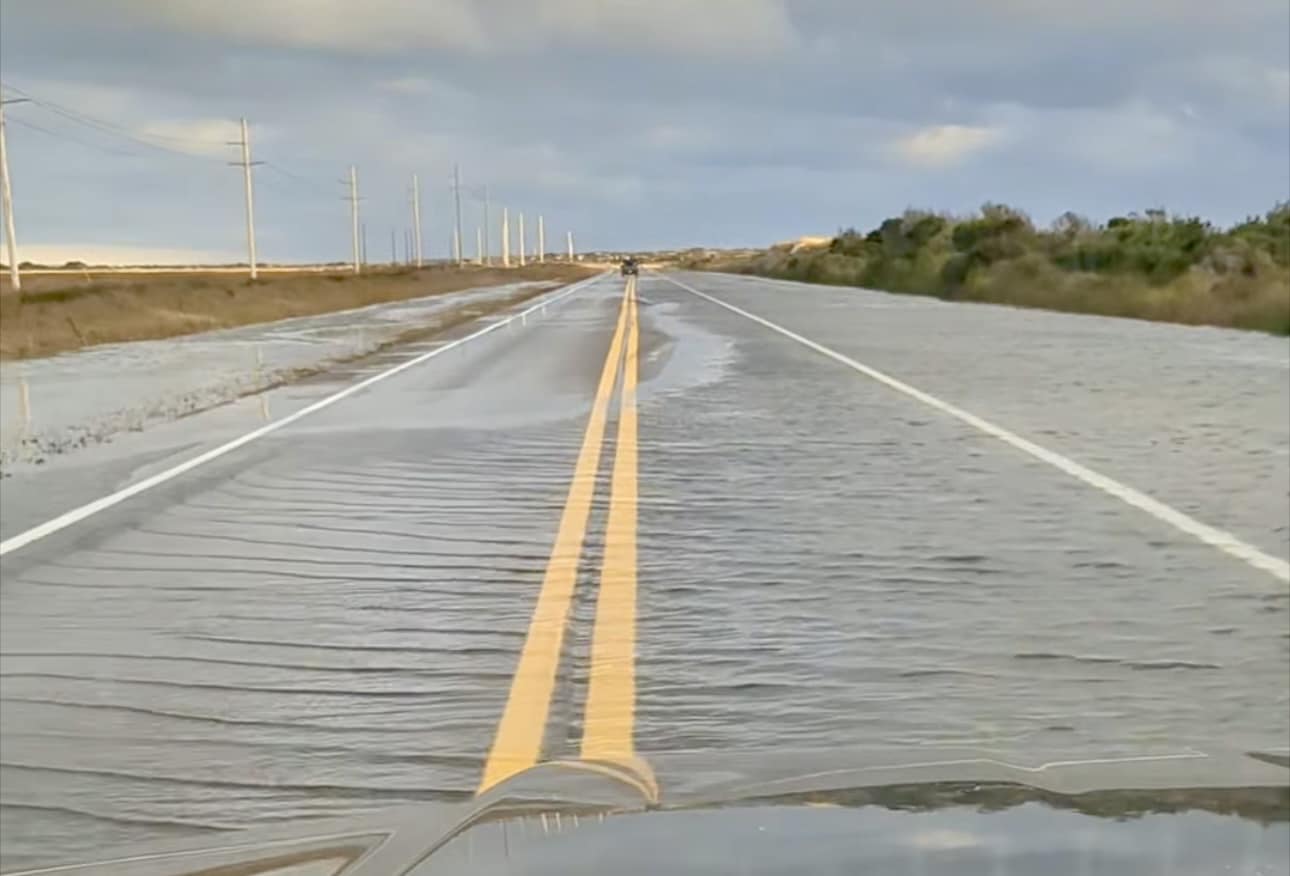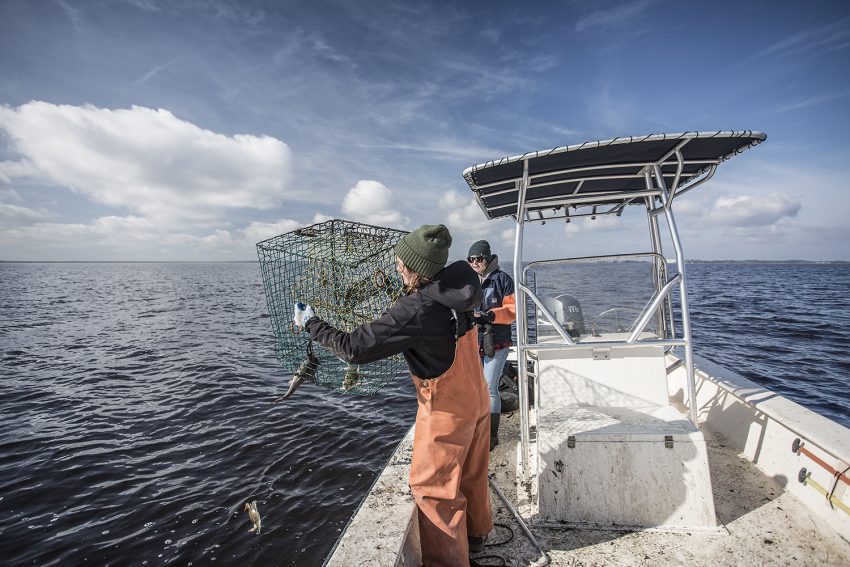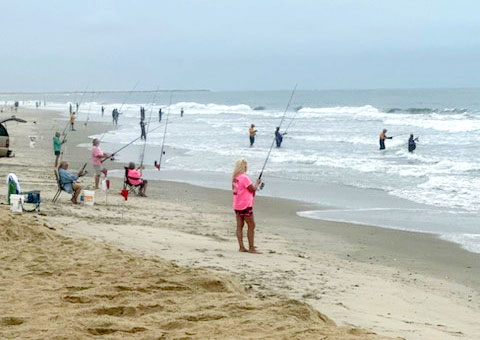What’s on the line? Atlantic bluefin tuna
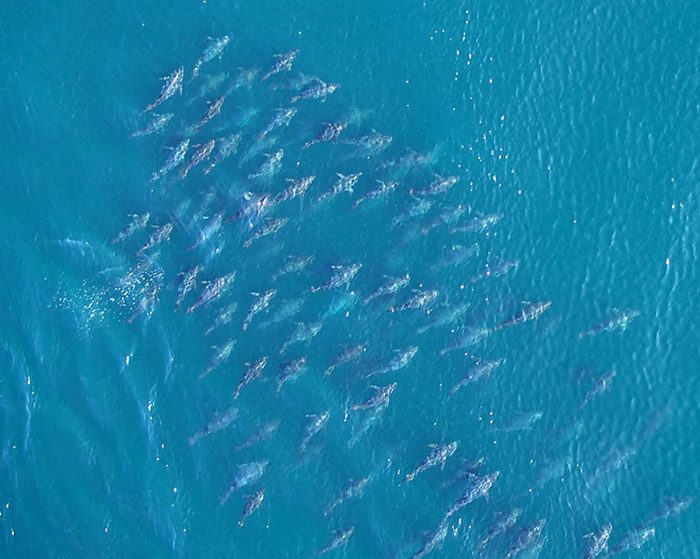
The Atlantic bluefin tuna season ranks high enough up on the fishing world calendar that the fish even has two of its own television shows.
This species is one of the largest open ocean migratory species of finfish found in the northwest Atlantic. Many fish are caught weighing well over 1,000 pounds and measuring 8 feet or more in length.
I have witnessed these huge animals being pulled off of a fishing boat and they are an awesome sight.
It is mainly left to the hardiest of fishers to pursue bluefin tuna. The expenses alone put it out of reach for the casual weekend fisher. For me, I visit the local supermarket to enjoy their labors from a can.
In North Carolina, the Atlantic bluefin tuna can be found year-round at varying degrees of availability, but are usually the most plentiful from January through March and into April off the Outer Banks, and November through December, with fish numbers increasing in October.
“North Carolina being situated so close to the Gulf Stream pretty much means that fishing for large Atlantic bluefin tuna will leave local waters that are accessible from shore day trips in the late spring and do not return in meaningful numbers until late fall,” Steve Poland, fisheries management section chief with the state Division of Marine Fisheries and vice chair of the South Atlantic Fisheries Management Council, told Coastal Review.
“From Cape Lookout and points south, these fish are usually inshore of the Gulf Stream and can be caught within sight of the beach, especially near Cape Lookout. Manteo is 45 miles offshore, while the Oregon Inlet is about 35 miles. Steaming out of Masonboro Inlet will take you twice as long to reach potential tuna fishing grounds, at approximately 60-70 miles offshore,” he said.
When you think about tuna fishing in North Carolina, Hatteras is one name that jumps to the front of the line because of the fame nationally syndicated tuna fishing shows have extended to that region. It’s also the closest land mass to the Gulf Stream, making it logistically easier for charter operators to reach those waters.
“While the common way of bluefin tuna fishing involves heavy tackle, you will find experienced anglers using light tackle to great success as well. Jigging and popping for bluefins is an extremely exciting experience, but one that’s best left to people with a bit of experience dealing with tuna. A more conventional way of fishing involves trolling with (about) 80- to 130-pound tackle. The state record for bluefin tuna is 805 pounds, but you’re most likely to encounter those in the 150- to 600-pound range,” Poland said.
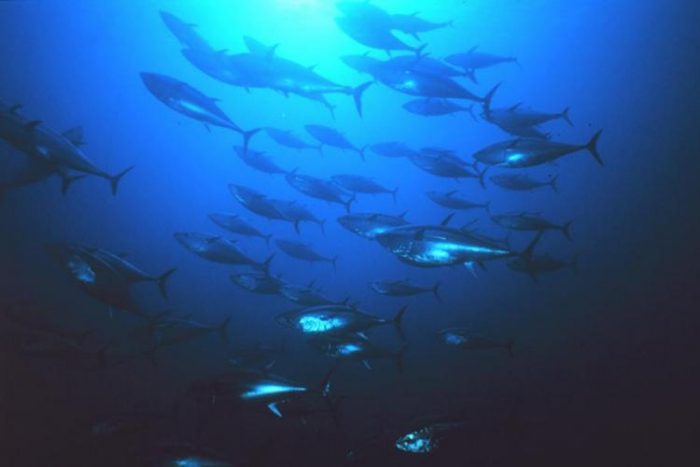
Bluefin tuna are found in the western Atlantic Ocean from Newfoundland, Canada, south to the Gulf of Mexico.
This fish has a large, torpedo-shaped body that is pretty much circular in shape around the body. Atlantic bluefin tuna are the largest species of tuna on the planet, and can grow up to 13 feet in length, and weigh upwards of 2,000 pounds.
When you see a tuna measuring more than 8 feet long, you have most likely seen a bluefin. This species is dark blue to black on the back and white on the lower sides and tummy. Bluefin tuna have lateral lines that have no color, and rows of colorless spots on their lower sides. The second top, or dorsal fin, usually has a reddish-brown color, and they have proportionally short pectoral fins. These body features, along with their sheer size, is how you tell the bluefin apart from other tuna cousins found in the Atlantic.
Poland explained that Atlantic bluefin tuna tend to grow at a slower rate than other tuna in the ocean.
“They live for a long time of up to 20 years or more and typically do not spawn until they are about 8 years of age. Spawning season runs from mid-April to June, primarily in the Gulf of Mexico. Females can produce up to 10 million eggs a year, depending on the size and age of the fish,” he said. “The eggs are broadcast and fertilized in the middle of the water column and hatch in about 48 hours, depending upon water temperatures.”
Bluefin tuna are not considered to be a top, or apex predator, as one would think. They are secondary consumers because they eat large amounts of schooling prey. They are the true king of finfish in the sea. Young tuna will eat crustaceans, squid and fish, with adult fish mainly feeding upon baitfish such as herring, bluefish and mackerel. Sharks, marine mammals including pilot and killer whales and other species of large fish, will feed on bluefin tuna. Bluefish and seabirds also look at the bluefin as a favorite snack.
This species is managed under the 2006 Consolidated Atlantic Highly Migratory Species Fishery Management Plan amendments. Management measures include that commercial and recreational fishers are required to have a permit to harvest bluefin tuna, and report all landings when fish are brought to shore. There is also an annual quota as well as sub-quotas. In addition, there are gear restrictions, time and area closures, and minimum size limits of bluefin tuna.
According to the National Oceanic and Atmospheric Administration Fisheries website, federal management for Atlantic tuna applies to state waters as well, except in Maine, Connecticut and Mississippi. NOAA Fisheries periodically reviews these states’ regulations to make sure they’re consistent with federal regulations. These regulations do not allow targeted fishing of bluefin tuna in the Gulf of Mexico, an important spawning area for the species.
Poland said that effective conservation and management of highly migratory species like bluefin tuna require international cooperation as well as strong domestic management.
“NOAA Fisheries, through the Atlantic Highly Migratory Species Management Division, manages the Atlantic bluefin tuna fishery in the United States, and sets regulations for the U.S. fishery based on conservation and management recommendations from the International Commission for the Conservation of Atlantic Tunas (ICCAT), consistent with applicable U.S. laws managed under the 2006 Consolidated Atlantic Highly Migratory Species Fishery Management Plan and amendments,” Poland reported.
NOAA Fisheries published several recent regulations that are expected to reduce and improve accounting for bluefin tuna dead discards, including gear-restricted areas and individual transferable quotas in the pelagic longline fishery, modified quota category allocations, and enhanced monitoring and reporting.
In 2000, the United States established the Dolphin-Safe Tuna Tracking and Verification Program to monitor the domestic production and importation of all frozen and processed tuna products nationwide, and to make sure any associated dolphin-safe claims are valid.
ICCAT implemented harvest quotas for the western Atlantic bluefin tuna stock back in 1982. Since then, catch has been relatively stable. U.S. catch makes up about half of the total western Atlantic bluefin tuna catch and less than 10% of Atlantic-wide bluefin tuna catch, including those caught in the Mediterranean Sea.
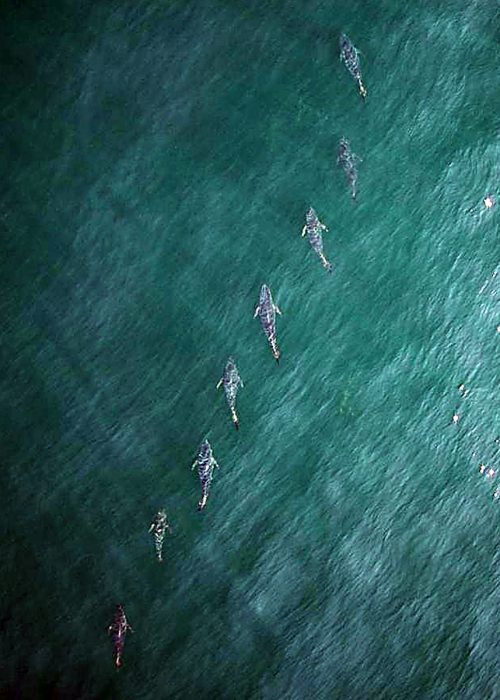
Poland said that U.S. fishermen can harvest bluefin tuna with hand gear, including rod and reel, handline and harpoon. Landings from purse seines are minimal, so the Highly Migratory Species Fishery Management Plan is currently considering removing this quota category.
“Although fishermen are not allowed to use pelagic longline gear in the United States to target bluefin tuna directly, regulations allow them to retain a limited number of bluefin tuna caught incidentally while fishing for other species such as swordfish and yellowfin tuna,” Poland said. “Fishermen generally target schools of bluefin tuna, and their fishing gear is fairly selective and allows for the live release of any unintentionally caught species. Fishing gear used to catch bluefin tuna rarely contacts the ocean floor and therefore has minimal impact on habitat.”
NOAA Fisheries requires U.S. commercial fishermen who fish for yellowfin tuna, swordfish and other species with pelagic longlines in the Gulf of Mexico to use weak hooks, a type of hook designed to reduce the accidental catch and bycatch of Atlantic bluefin tuna. The weak hook regulations are specific to longliners. Fishing for bluefin tuna in two known hotspots — Cape Hatteras and the Gulf of Mexico are tightly controlled with regulations.
In 2019, commercial landings of Atlantic bluefin tuna totaled 2.4 million pounds and were valued at more than $9.6 million, according to NOAA Fisheries’ commercial fishing landings database. These figures may not match other agency sources of data due to confidential information.
According to the agency’s website, ex-vessel prices, or the amount fishers receive directly for their catch, depend on a number of factors, including the quality of the fish, for example, freshness, fat content, method of storage, the weight of the fish, the supply of fish, and consumer demand. Exports vary from year to year. The majority of exported U.S. Atlantic bluefin tuna catch is sent to sushi markets in Japan. Exports of Atlantic bluefin tuna generally depend on the amount of commercial landings and Japanese yen/U.S. dollar exchange rates.
Bluefin tuna may not be sold under the guidelines of the U.S. recreational fishery for Atlantic bluefin tuna. Bluefin tuna must be larger than 27 inches to be kept. Depending on the recreational fishery, private vessels and charter vessels, limits on the amount and size of fish that fishermen can keep per fishing trip will vary. For the latest information on current retention limits, visit the NOAA Fisheries HMS Permit Shop.
All released bluefin tuna must be let go without removing the fish from the water and in a way that will give the fish the best chances of survival. Recreational fishing for highly migratory species such as bluefin tuna provides significant economic benefits to coastal communities through individual angler fishing-related costs, recreational charters, tournaments, and the shoreside businesses that support those fisheries.
For me, the best way to enjoy fishing for the Atlantic bluefin tuna, is tuning into my local cable channel and watching it from the comfort and safety of my home – while eating tuna fish sandwiches, or course.






